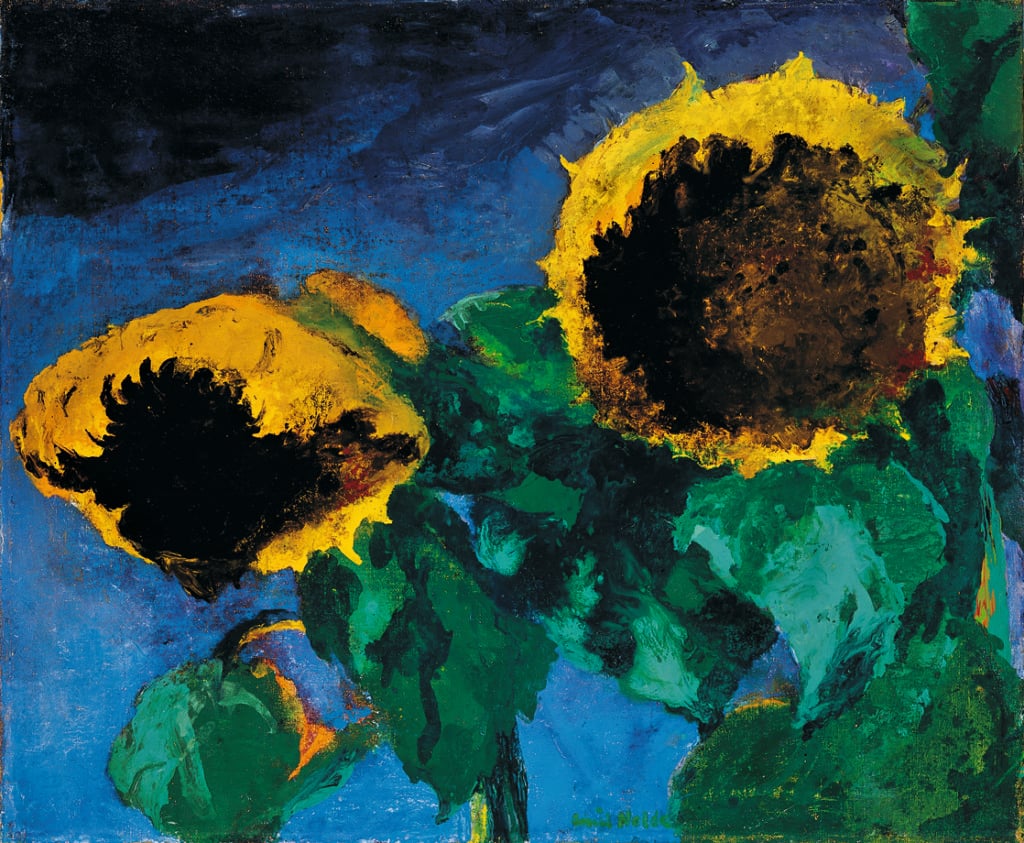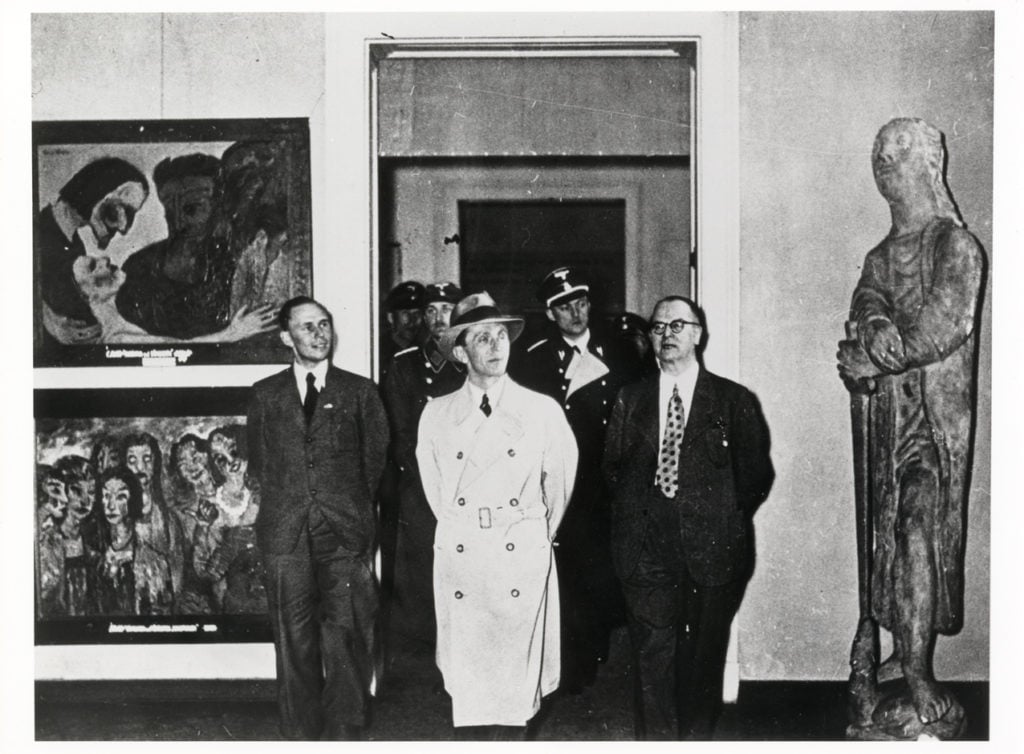Art & Exhibitions
Angela Merkel Purges Artworks by Emil Nolde From Her Office as a New Exhibition Explores His Nazi Past
The exhibition confronts the artist's long hidden anti-Semitism.

The exhibition confronts the artist's long hidden anti-Semitism.

Javier Pes

The German media was abuzz last week when news broke that Chancellor Angela Merkel had decided to remove two paintings by Emil Nolde, the renowned German expressionist, from the walls of her office. The move has widely been interpreted as a sign that the artist’s long-suppressed Nazi views are finally becoming part of his official story.
Until recently, Nolde always had an alibi. Although he joined the Nazi party in 1934, his vividly colored landscapes and still lifes were condemned by the Nazis as degenerate. The artist would go on to greatly exaggerate the Nazi ban on his work in his memoirs after the war. And papers in his archive revealing the extent of his anti-Semitism and unwavering support of Hitler have long been inaccessible to scholars, while museum exhibitions rarely touch on the subject.
That is, until now. One of the two paintings Angela Merkel removed from her walls will be included in a show that, for the first time, directly addresses the artist’s support of the Nazis—and his attempt to cover up that fact after the war.
The exhibition also raises the wider question of how museums should address controversial aspects of an artist’s biography. (Last year, the exhibition “Emil Nolde: Color Is Life,” which was organized by the foundation with the National Museum of Ireland and the National Galleries of Scotland, played down Nolde’s anti-Semitism.) Captions and catalogues have traditionally been euphemistic or evasive when an artist’s behavior was unsavory—but the tide may be turning.

Joseph Goebbels and Nolde’s work in the “Entartete Kunst (Degenerate Art)” exhibition in Berlin, 1938. Copyright Staatliche Museen zu Berlin, and the Emil Nolde bei Nolde Stiftung Seebüll.
The groundbreaking Emil Nolde exhibition opens tomorrow, April 12, at Berlin’s Hamburger Bahnhof museum. Subtitled “The Artist During Nazi Regime,” the show challenges the myth that Nolde was a victim of Hitler, as he liked to claim. It is true that a star loan in the show from the Detroit Institute of Arts, Sunflowers (1932), was confiscated by the Nazis and declared “degenerate” in 1937. But it seems the artist’s faith in National Socialism did not waver until the end of the war.
While the artist’s membership of the Nazi Party has long been known—he was even disappointed not to be appointed an official state artist—Nolde’s foundation has long worked to downplay his enthusiasm for National Socialism and promote the idea that he was banned completely from painting. (In reality, sales and exhibitions of his art had to be officially authorized after 1941, but he continued to work.) The foundation has in the past also restricted access to problematic parts of his archive that show the extent of his anti-Semitism.
The full story of the artist has been made possible by the new head of the Ada and Emil Nolde Foundation, Christian Ring, who took over in 2013. In contrast to his predecessors, he has opted to open up the artist’s entire archive to researchers: “All are cards are on the table,” he told the New York Times. One scholar recounted recently coming across a file titled “E.N. and Jews.”
Ring has also co-organized the Berlin show, which aims to revise generations of “reputation laundering,” begun by the artist himself and perpetuated by his foundation. For the first time, links between Nolde’s politics and his paintings will be revealed, putting images of Nordic sacrifice in a new light, as well as his caricatures of Jewish people.
Merkel declined to say that she was removing Nolde’s works due to the new scrutiny of his beliefs. She told press that she was returning the paintings to their owner, the Prussian Cultural Heritage Foundation, because they were to be included in the Berlin exhibition. In fact, only one was needed for the show. She does not plan to take them back after the exhibition ends.
“Emil Nolde, A German Legend: The Artist During the Nazi Regime” is on view from April 12 through September 15 at the Hamburger Banhof, Berlin.